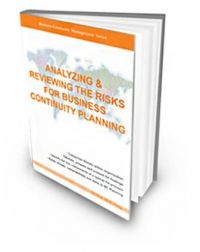Impact
2. Evaluated consequence of a particular outcome.


(Source: AE/HSC/NCEMA 7000:2021)
3. The potential level of impact and effect of a Business Continuity E/I/C over time on an organization. The level of impact and effect is usually relative to the size of the organization and its BCM resilience. The types of business impact are usually described as financial and non-financial and are further divided into specific types of impact.
(Source: Business Continuity Institute - BCI)
4. Evaluated consequence of a particular outcome.
(Source: ISO 22399:2007 – Societal Security - Guideline for Incident Preparedness and Operational Continuity Management) - clause 3.10
5. An operating expense that continues following an interruption or disaster which as a result of the event cannot be offset by income and directly affects the financial position of the organization.
(Source: NFPA 1600 Standard on Disaster/Emergency Management and Business Continuity Programs, NFPA 1600:2007)
(Source: Australia. A Practitioner's Guide to Business Continuity Management HB292 - 2006 )
6. The outcome following the occurrence of an event.
(Source: Australia. A Practitioner's Guide to Business Continuity Management HB292 - 2006 )
7. Measure of the business criticality of an incident.Often equal to the extent to which an incident leads to distortion of agreed or expected Services Level.
(Source: OGC, Information Technology Infrastructure Library (ITIL) v3)
8. Evaluated consequence of a particular outcome.
(Source: British Standard BS25999-1:2006 Code of Practice for Business Continuity Management)
9. A measure of the effect that an Incident, Problem or Change is having or might have on the business being provided with Business Continuity. Often equal to the extent to which agreed or expected levels of service may be distorted. Together with urgency, and perhaps technical security, it is the major means of assigning priority for dealing with Incidents, Problems or Changes.
(Source: Disaster Recovery Institute International / Disaster Recovery Journal - DRII/DRJ)
(Source: ENISA - the European Network and Information Security Agency. BCM & Resilience Glossary)


